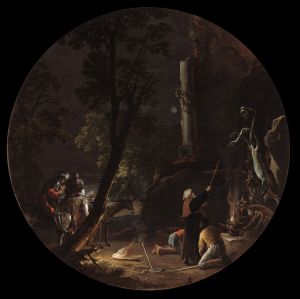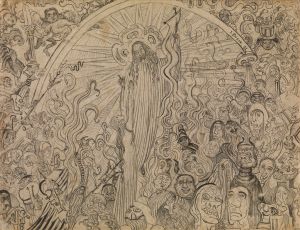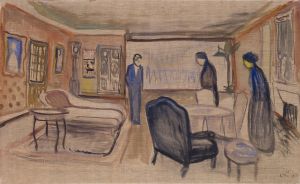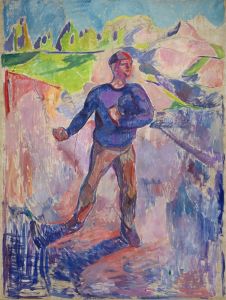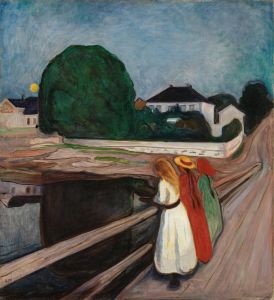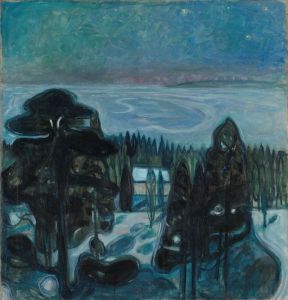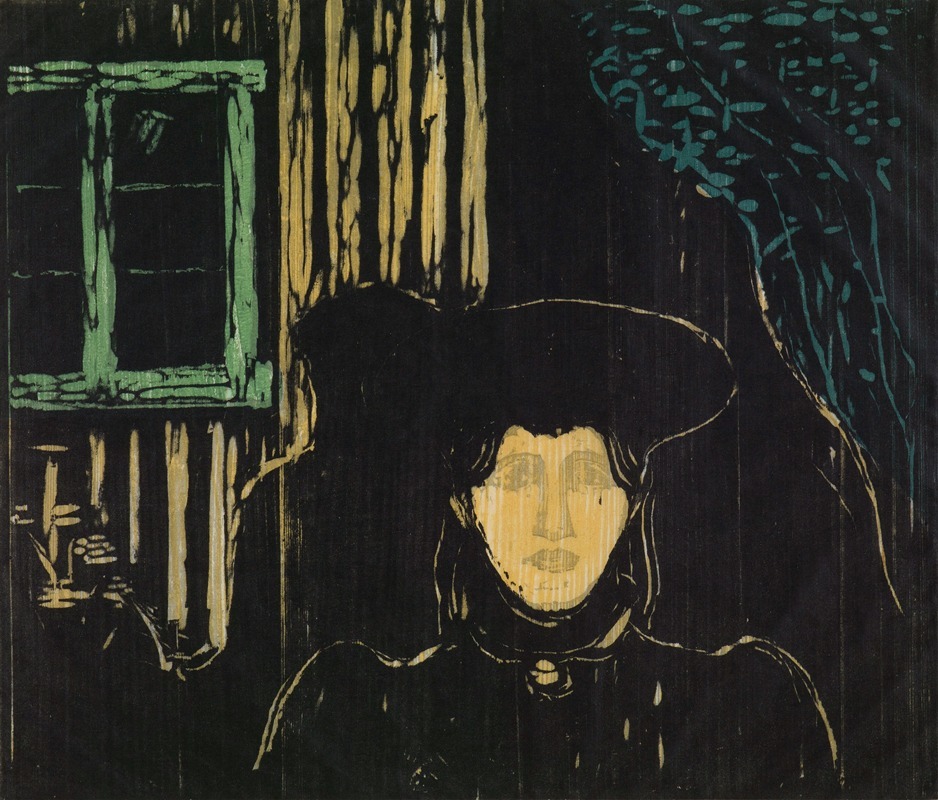
Moonlight
A hand-painted replica of Edvard Munch’s masterpiece Moonlight, meticulously crafted by professional artists to capture the true essence of the original. Each piece is created with museum-quality canvas and rare mineral pigments, carefully painted by experienced artists with delicate brushstrokes and rich, layered colors to perfectly recreate the texture of the original artwork. Unlike machine-printed reproductions, this hand-painted version brings the painting to life, infused with the artist’s emotions and skill in every stroke. Whether for personal collection or home decoration, it instantly elevates the artistic atmosphere of any space.
Edvard Munch, a Norwegian painter and printmaker, is renowned for his evocative and emotionally charged works that explore themes of existentialism, love, and death. One of his lesser-known paintings, "Moonlight," exemplifies his unique style and thematic focus. Created in 1893, "Moonlight" is part of Munch's exploration of the Symbolist movement, which sought to express the emotional experiences of the human psyche through art.
"Moonlight" depicts a serene yet haunting nocturnal scene, characterized by its use of color and light to convey mood and emotion. The painting features a landscape bathed in the soft glow of moonlight, with a solitary figure standing near a body of water. The composition is marked by Munch's distinctive use of swirling lines and vibrant colors, which create a sense of movement and emotional intensity. The moonlight casts an ethereal glow over the scene, highlighting the contrast between light and shadow, a technique Munch often employed to evoke a sense of mystery and introspection.
Munch's work is heavily influenced by his personal experiences and the cultural context of his time. Born in 1863, Munch faced numerous personal tragedies, including the early deaths of his mother and sister, which profoundly impacted his worldview and artistic expression. These experiences are often reflected in his art, which frequently explores themes of loss, anxiety, and the passage of time. "Moonlight" can be seen as a continuation of these themes, with its melancholic atmosphere and contemplative subject matter.
The painting is also indicative of Munch's interest in the Symbolist movement, which emerged in the late 19th century as a reaction against the naturalism and realism that dominated the art world. Symbolists sought to convey the inner workings of the mind and the complexities of human emotion through symbolic imagery and abstract forms. In "Moonlight," Munch uses the natural landscape as a metaphor for the inner emotional landscape, inviting viewers to reflect on their own feelings and experiences.
Munch's innovative use of color and form in "Moonlight" demonstrates his departure from traditional artistic conventions and his embrace of modernist ideas. His bold, expressive brushstrokes and unconventional compositions were influential in the development of Expressionism, a movement that sought to depict the subjective emotions and experiences of the artist. Munch's work, including "Moonlight," paved the way for future generations of artists to explore new ways of representing the human condition.
Today, Edvard Munch is best known for his iconic painting "The Scream," but works like "Moonlight" offer valuable insights into his broader artistic vision and the themes that preoccupied him throughout his career. "Moonlight" remains an important example of Munch's ability to capture the complexity of human emotion and the beauty of the natural world, making it a significant piece in the history of modern art.







